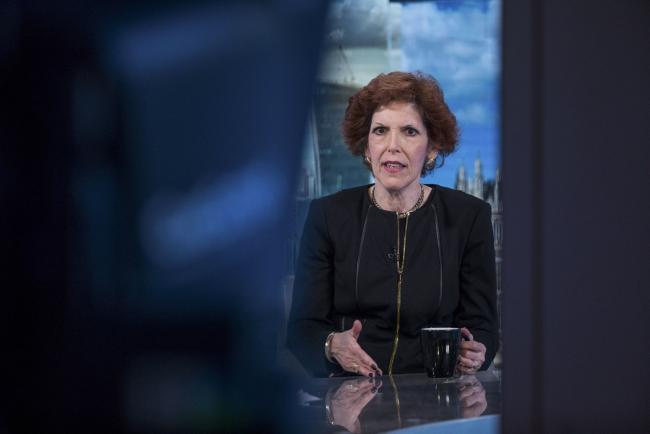
Fed’s Mester Leans Against Yield-Control Move at June FOMC
by Bloomberg(Bloomberg) -- Federal Reserve Bank of Cleveland President Loretta Mester said she doesn’t think the central bank is close to a decision on targeting Treasury yields, a policy known as yield-curve control.
“No decisions have been made on that at all,” Mester said Friday in an interview with Michael McKee and Jonathan Ferro (NYSE:FOE) on Bloomberg Television. “I don’t think of that as something that would be in this phase of what we’re doing, to make sure the markets continue to function. But as a tool I think it’s worthwhile thinking about.”
Members of the Fed’s policy-making panel, the Federal Open Market Committee, will meet June 9-10, when they are widely expected to leave interest rates just above zero to support the economy during the coronavirus pandemic. Mester is a voting member this year on the FOMC.
Officials are also likely to at least discuss yield-curve control, a policy tool that hasn’t been used in the U.S. since Word War II. The approach involves purchasing, or selling, Treasury securities in order to target the yield on a specific maturity. New York Fed President John Williams (NYSE:WMB) said May 27 that U.S. central bankers were “thinking very hard” about using that tool.
Future Discussion
Mester said she didn’t want to take yield-curve control off the table, but that, “right now that’s a discussion for the future phase,” Mester said. “I just don’t see it here in this phase. Nor do I see going forward that we would necessarily need to use it.”
As more of the U.S. moves to lift virus-related restrictions, Mester said the Fed will move into a phase of more “traditional” monetary policy aimed at supporting the recovery. In recent weeks, it has focused on keeping financial markets functioning and launching other emergency facilities that extend credit to companies as well as state and local governments.
“The tools that we have are our interest-rate tool, which is already at zero, forward guidance, which we’ve used before, and also asset purchases, but asset purchases not to improve market functioning but to really support the economy,” she said.
Following the global financial crisis of 2007-09, the Fed used large-scale asset purchases to lower long-term borrowing costs after slashing the benchmark fed funds rate to zero. In this crisis, the Fed has also bought trillions of dollars in Treasuries, but with the goal of simply restoring liquidity to that market after an extraordinary period of investor flight in March.
Slow Recovery
To date, the Fed hasn’t viewed those purchases as stimulative for the economy because so much of the country remains locked down in an effort to contain the virus.
Mester said once the public health crisis has passed the economic rebound may be sluggish.
“The recovery could be slow,” she said. “When you have so many people out of work it’s hard to imagine that we’d see a quick, v-shaped recovery.”
Asked about increased tensions between the U.S. and China, Mester said the increased uncertainty could act as another headwind for the battered economy.
“We’ve played this game before and saw how the uncertainty did dampen the expansion earlier,” she said. “So we have to just take this on board as an uncertainty added to an incredible amount of uncertainty we already have.”
(Updates with additional comments from fifth paragraph.)
©2020 Bloomberg L.P.